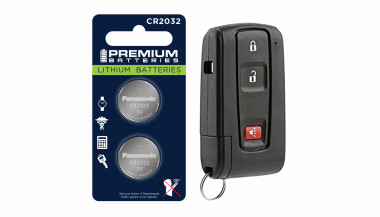Misplacing or damaging your car keys can be a major inconvenience, but it doesn't have to be a costly ordeal. As a car owner seeking budget-friendly and efficient solutions, understanding your options is crucial. Here's a comprehensive guide to help you navigate the process of replacing your car keys without breaking the bank.
Understanding Your Car Key Type
Identifying the specific type of car key you have is the first step toward an effective replacement:
Traditional Metal Keys: Simple, non-electronic keys that are easy and inexpensive to duplicate.
Transponder Keys: Equipped with a chip that communicates with your vehicle's ignition system for added security.
Remote Key Fobs: Allow remote locking and unlocking of your vehicle, often integrated with a transponder chip.
Smart Keys: Provide keyless entry and start features, utilizing advanced technology for convenience.
Cost-Effective Alternatives to Dealership Key Replacement
Dealerships are known for charging premium prices for key replacements. Consider these more affordable options:
Professional Locksmiths: Specialize in cutting and programming various types of car keys, often at a fraction of dealership costs.
Online Key Retailers: Offer replacement keys and fobs that can be purchased and then programmed either by yourself or a professional.
Hardware Stores: Some stores can duplicate traditional metal keys on the spot, providing a quick and inexpensive solution.
Steps to Take When You've Lost Your Car Key
Losing your car key can be stressful, but following these steps can streamline the replacement process:
Verify Your Vehicle Identification Number (VIN): Locate your VIN, typically found on the dashboard or inside the driver's side door, as it is essential for key replacement.
Gather Necessary Documentation: Prepare proof of ownership, such as your vehicle registration and personal identification.
Contact a Professional: Reach out to a reputable locksmith or key replacement service with your vehicle details to obtain a new key.
Removing a Broken Key from the Ignition or Door Lock
A broken key can be a frustrating obstacle. Here's how to address it:
Use Needle-Nose Pliers: If a portion of the key is protruding, gently extract it using pliers.
Apply Lubricant: Spray a graphite-based lubricant into the lock to ease the removal process.
Seek Professional Assistance: If the key fragment is lodged deep or these methods fail, contact a locksmith to prevent further damage.
Preventative Measures to Avoid Future Key Issues
Keep a Spare Key: Having a duplicate stored safely can save time and money in emergencies.
Regular Maintenance: Inspect your keys and locks periodically for signs of wear and address issues promptly.
Use Key Protectors: Invest in key covers or cases to minimize physical damage.

_1733224387.jpg)
 (1)_1736339630.jpg)
 (1)_1743078116.jpg)

 (1)_1746173037.jpg)